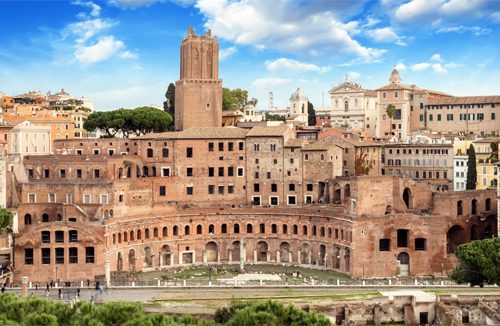
Piazza Barberini
Piazza Barberini: A Historic Gateway to Baroque Rome
Nestled in the heart of Rome, Piazza Barberini serves as a vibrant crossroads between the city’s Baroque heritage and its modern urban rhythm. Located at the convergence of Via Veneto, Via del Tritone, and Via Barberini, this elegant square has long been a focal point for Roman life, art, and architecture. Its history is intertwined with the powerful Barberini family, whose influence helped shape the cultural and political landscape of 17th-century Rome.
Origins and Historical Significance
Piazza Barberini emerged as an important urban space during the 16th and 17th centuries, when Rome underwent a wave of architectural and artistic development. The Barberini family—whose members included Pope Urban VIII—commissioned grand palaces, churches, and works of art, dramatically transforming the city. Their legacy dominates the square, which takes its name from them and remains a symbol of their lasting influence.
The most important testament to their power is nearby Palazzo Barberini, now home to the National Gallery of Ancient Art. The building itself is a masterpiece of Baroque architecture, designed by three great architects: Carlo Maderno, Francesco Borromini, and Gian Lorenzo Bernini. Its facade and interiors reflect a blend of stylistic innovation and artistic grandeur that defined the period.
Bernini’s Masterpieces: Fountains of Myth and Symbol
Piazza Barberini is most famous for the two fountains designed by the celebrated sculptor Gian Lorenzo Bernini, whose works helped define Baroque Rome.
Triton Fountain (Fontana del Tritone)
Completed in 1643, the Triton Fountain rises boldly from the center of the square. Sculpted in travertine, it depicts the sea god Triton kneeling atop four open-mouthed dolphins. Their twisting bodies support an enormous shell, from which Triton emerges, blowing water through a conch. The fountain is not only an artistic marvel but also a symbol of the Barberini family’s power. Their emblem, the bee, is carved prominently on the dolphins.
The dynamic movement, dramatic expression, and intricate detail make it one of Bernini’s most celebrated fountains, embodying the energy and theatricality of the Baroque era.
Fountain of the Bees (Fontana delle Api)
Located at the corner of the square near Via Veneto, the Fountain of the Bees was completed in 1644. Smaller and more intimate than its counterpart, it features an open shell adorned with the Barberini bees. Originally, it served as a public drinking fountain; today, it remains a beloved detail of the square’s architectural ensemble.
A Square in Motion: Modern Piazza Barberini
While rich in history, Piazza Barberini today is also one of Rome’s busiest intersections. The square is a transportation hub, served by buses and Metro Line A. Despite the bustle of modern traffic, the piazza still manages to retain a sense of elegance and artistic charm.
Surrounding the square are hotels, cafés, and restaurants, making it a convenient base for visitors exploring Rome. In the evening, the fountains glow under warm lighting, creating a romantic and atmospheric setting.
Nearby Attractions
The location of Piazza Barberini makes it an ideal starting point for exploring several iconic Roman landmarks:
Via Veneto, the glamorous street made famous by Federico Fellini’s La Dolce Vita, begins at the square.
Trevi Fountain is only a short walk away, inviting visitors to toss a coin and make a wish.
Quirinal Palace, residence of Italy’s president, lies nearby atop the Quirinal Hill.
Palazzo Barberini, steps from the square, offers one of Italy’s finest collections of Renaissance and Baroque art, including masterpieces by Caravaggio, Raphael, and Guido Reni.
A Timeless Roman Meeting Place
Piazza Barberini is more than just a transportation junction or an open urban space. It is a living testimony to the artistic ambitions and historical narratives that shaped Rome. Whether admiring Bernini’s sculptures, strolling toward Via Veneto, or simply watching the city flow around you, the square offers a blend of history, beauty, and energy that captures the essence of Rome.
![]()



